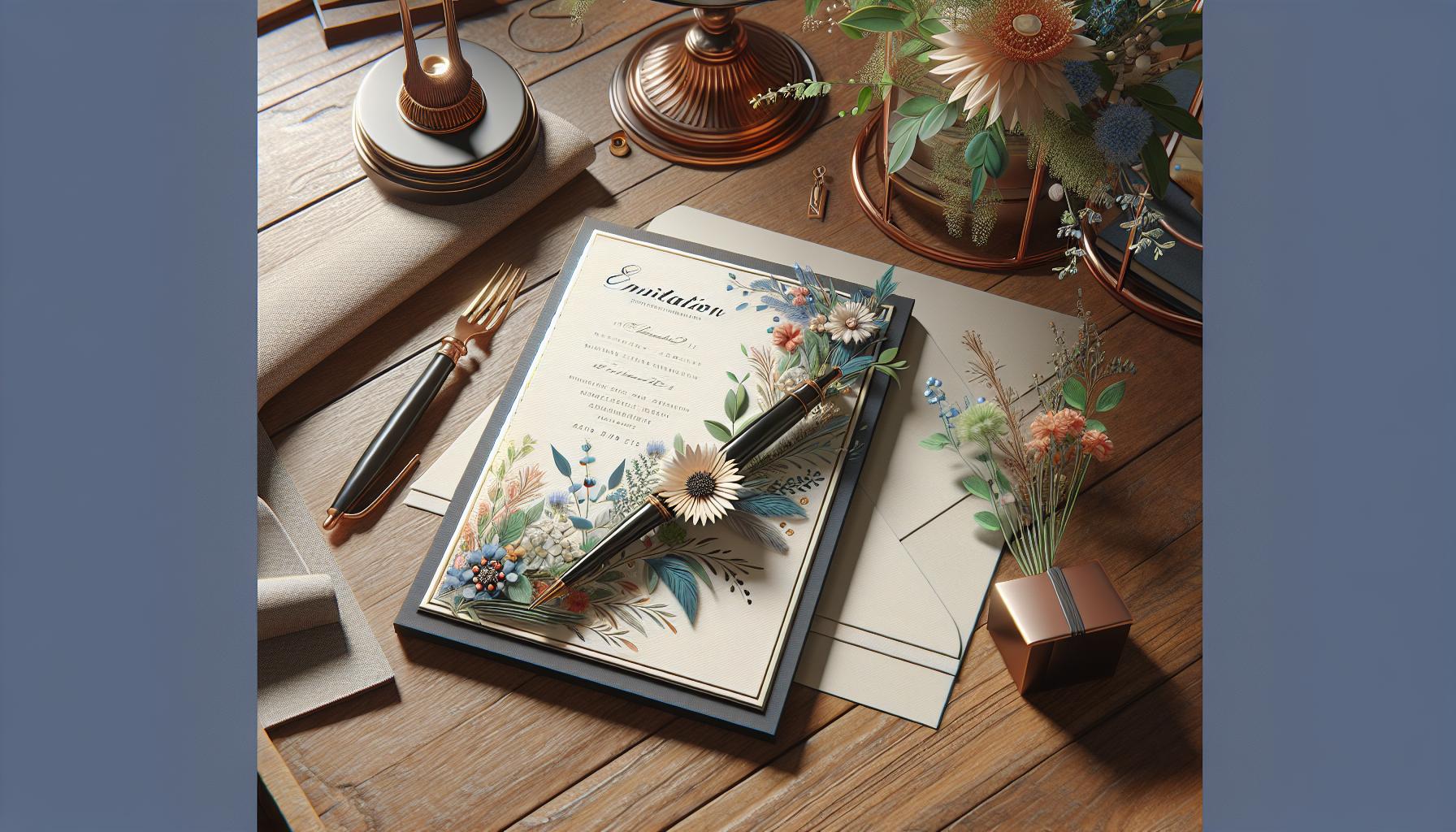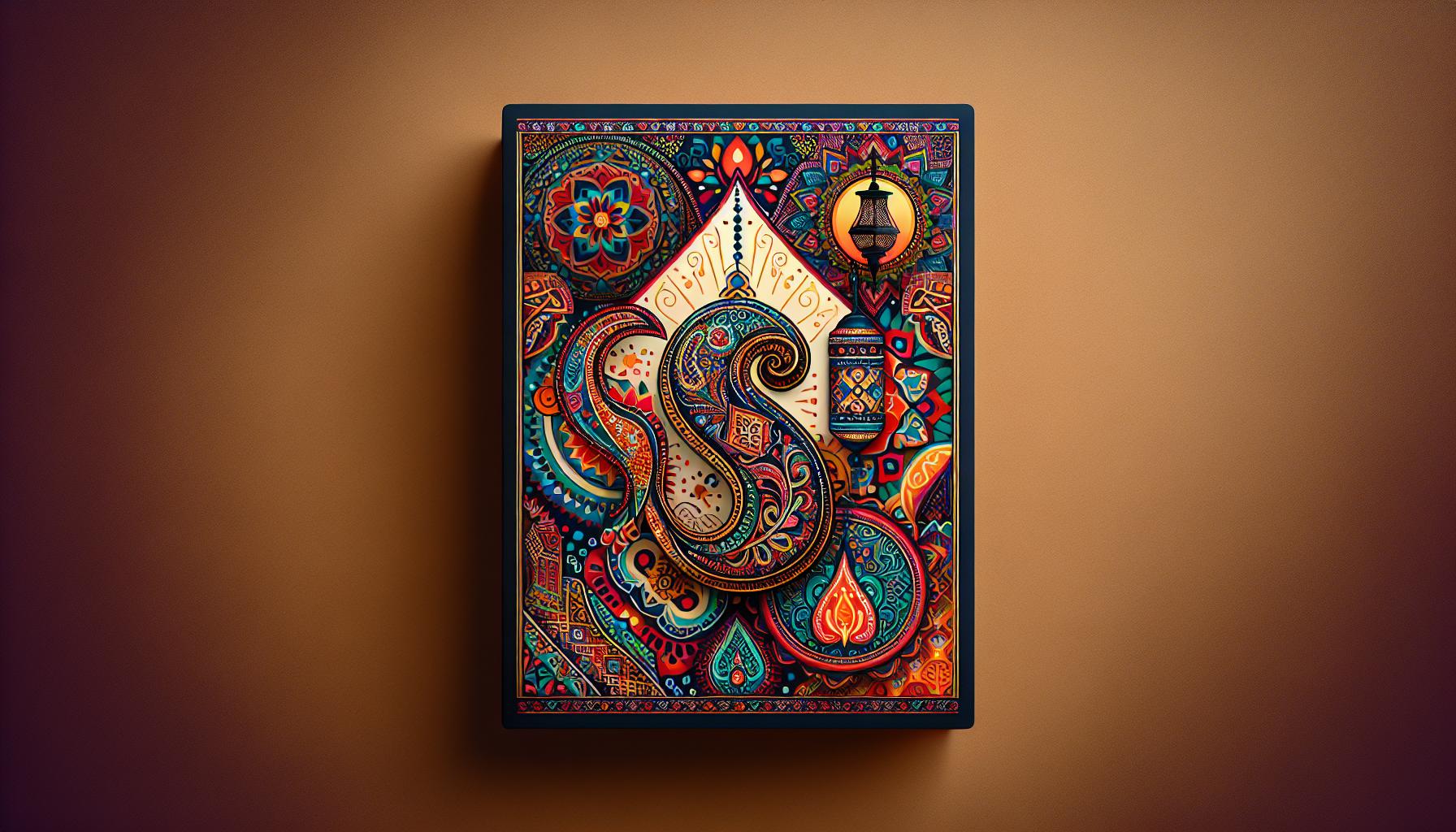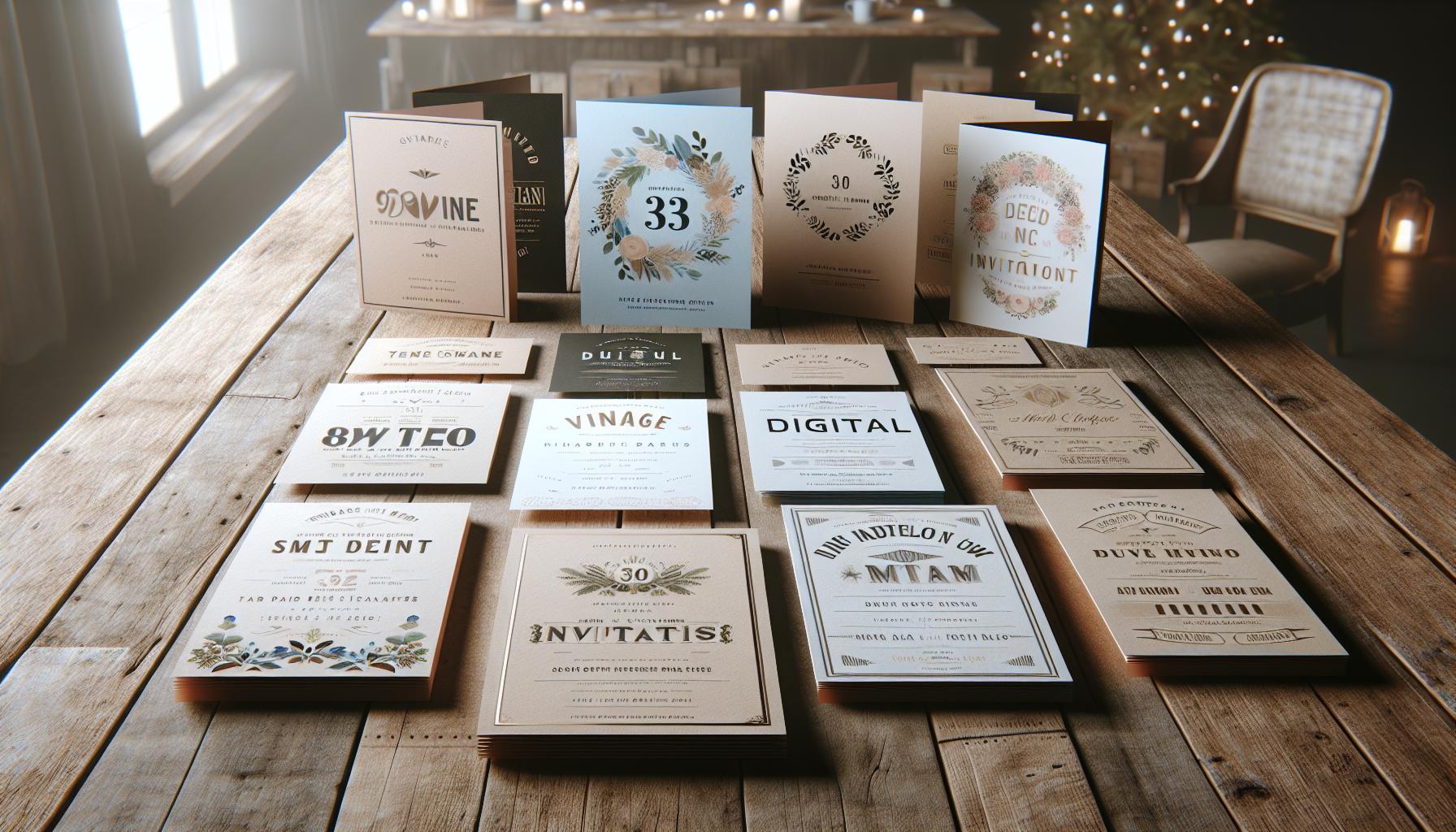When it comes to setting the tone for any event, the invitation card is often the first glimpse guests get. I’ve always believed that a well-designed invitation can create excitement and anticipation long before the main event. The right design not only conveys essential details but also reflects the theme and mood, making it a crucial element of the planning process.
In this article, I’ll dive into the nuances of invitation card design, exploring various styles and trends that can elevate your invitations from ordinary to extraordinary. Whether you’re planning a wedding, birthday party, or corporate event, understanding the elements of effective design will help you craft invitations that leave a lasting impression. Let’s unlock the secrets to creating stunning invitations that truly resonate with your guests.
Key Takeaways
- Importance of Design: A well-designed invitation card sets the tone for an event and creates anticipation among guests.
- Trends in Design: Popular styles include minimalist, vintage, bold graphic, digital, and thematic designs, each with unique advantages tailored to different occasions.
- Key Design Elements: Focus on size, material, and format to enhance the invitation’s aesthetic and functional aspects; common sizes include 4″x6″ and 5″x7″.
- Target Audience Consideration: Understanding demographics, cultural backgrounds, and user preferences is essential for creating resonant invitation designs that appeal to specific guest groups.
- Balancing Aesthetics and Functionality: Successful invitations blend visual appeal with clear communication of essential details like date, time, and location.
- Customization and Personalization: Offering personalized options in design allows hosts to reflect their individuality and enhance the emotional connection with guests.
Background:lvhj1ux_ffi= Invitation Card Design
Background:lvhj1ux_ffi= invitation card design showcases the intersection of creativity and functionality. This design emphasizes aesthetic appeal while effectively conveying event details. Inviting elements often include color schemes, typography, and illustrations that align with the event’s theme.
Popular trends in the background:lvhj1ux_ffi= design include minimalist styles, vintage inspirations, and bold graphics. Each trend offers unique advantages. Minimalist designs often attract attention through their simplicity, while vintage designs evoke nostalgia, enhancing emotional connections. Bold graphics frequently generate excitement, making them particularly suitable for celebratory events.
Key design elements include size, material, and format. Standard sizes for invitations range from 4″x 6″ to 5″x 7″, ensuring easy handling and mailing. Material options such as cardstock, textured paper, and recycled paper reflect sustainability trends while enhancing tactile experiences. Formats like digital invitations are gaining popularity, catering to environmentally conscious choices and providing instant delivery.
By merging creative visuals with structured information, background:lvhj1ux_ffi= invitation card design establishes a memorable first impression for any occasion. Understanding these design principles empowers me to craft invitations that not only look appealing but also serve as effective communication tools for my events.
Features of the Design

A well-crafted invitation card design balances aesthetic appeal with functionality. The following features exemplify this balance.
Aesthetic Appeal
Aesthetic appeal captivates guests right from the moment they receive the card. Eye-catching color schemes evoke emotions, while cohesive typography enhances readability. Specific design elements, such as elegant illustrations or textured backgrounds, add depth and character. Popular trends, like minimalist or vintage styles, contribute to a unique identity for the event. Customization options allow hosts to tailor designs to reflect personal tastes or themes, making each invitation memorable.
Functional Aspects
Functional aspects ensure that the invitation effectively communicates vital information. Clear and concise text conveys essential details like date, time, location, and RSVP instructions. Organized layouts guide the reader’s eye, preventing confusion. Predictable size formats, such as 4″x 6″ or 5″x 7″, facilitate mailing or digital distribution. High-quality materials, like sturdy cardstock, not only enhance durability but also reflect the event’s formality. These functional features help make the invitation not just visually appealing but also a practical tool for event communication.
Target Audience

Understanding the target audience is crucial for effective invitation card design. Identifying demographics and user preferences ensures designs resonate with potential guests and match the event’s theme.
Demographic Insights
Demographic factors play a significant role in shaping design choices. Age groups, cultural backgrounds, and income levels influence preferences.
- Age Groups: Young adults often prefer modern, vibrant designs, while older generations may favor traditional aesthetics. Tailoring designs to the age range of attendees enhances appeal.
- Cultural Backgrounds: Different cultures have unique customs and colors that can impact design. Knowing these distinctions allows for culturally respectful and relevant invitations.
- Income Levels: Higher-income segments may expect luxurious materials and sophisticated designs, whereas budget-conscious audiences appreciate creativity within financial constraints.
User Preferences
User preferences dictate specific features that enhance overall satisfaction. Gathering insights about taste trends ensures invitations not only attract attention but also reflect recipients’ ideals.
- Design Styles: Users gravitate toward specific styles based on personal taste. Minimalist designs offer elegance, while bold graphics create excitement, catering to diverse preferences.
- Customization: Many invitees appreciate personalized touches, such as unique color combinations or custom illustrations, which add a sentimental value.
- Format Choices: Preferences for physical versus digital formats vary among users. Offering both options addresses different target audience segments, accommodating the growing demand for eco-friendly digital invites.
By comprehensively analyzing demographic insights and user preferences, I can create invitation card designs that effectively engage the intended audience and elevate event experiences.
Comparison with Other Invitation Card Designs

When examining the background:lvhj1ux_ffi= invitation card design, it’s essential to compare it with other prevalent styles. Various designs offer distinct advantages and unique aesthetics that cater to different events.
- Minimalist Designs: Minimalist invitation cards focus on simplicity, using clean lines and ample white space. These designs convey elegance and clarity, making them ideal for modern events.
- Vintage Designs: Vintage invitations evoke nostalgia through intricate details, classic fonts, and muted color palettes. They suit events that embrace a historical or romantic theme, appealing to those who value tradition.
- Bold Graphic Designs: Bold graphic invitations utilize vibrant colors and eye-catching patterns. These designs create excitement, perfect for lively celebrations such as birthday parties or themed events.
- Digital Invitations: Digital invitations offer an eco-friendly alternative, enabling quick distribution via email or social media platforms. These designs often feature interactive elements, appealing to tech-savvy audiences.
- Thematic Designs: Thematic invitations integrate elements reflecting the event’s theme, like colors and illustrations. They enhance the guest experience by setting a cohesive tone for weddings, holiday parties, or corporate events.
Each design type carries its own characteristics, influencing both aesthetic appeal and practicality. Understanding these differences aids in selecting the right invitation style that resonates with event goals and audience preferences.
Creating the perfect invitation card is an art that combines creativity with functionality. The right design not only conveys essential details but also sets the mood for the event. By understanding various styles and trends, I can craft invitations that truly resonate with my guests.
Whether I lean towards minimalist elegance or bold graphics, each choice reflects my unique vision and the event’s theme. It’s all about making that first impression count and ensuring my invitations are as memorable as the occasions they represent. With a thoughtful approach to design and a keen awareness of my audience, I can elevate any event experience through stunning invitation cards.

